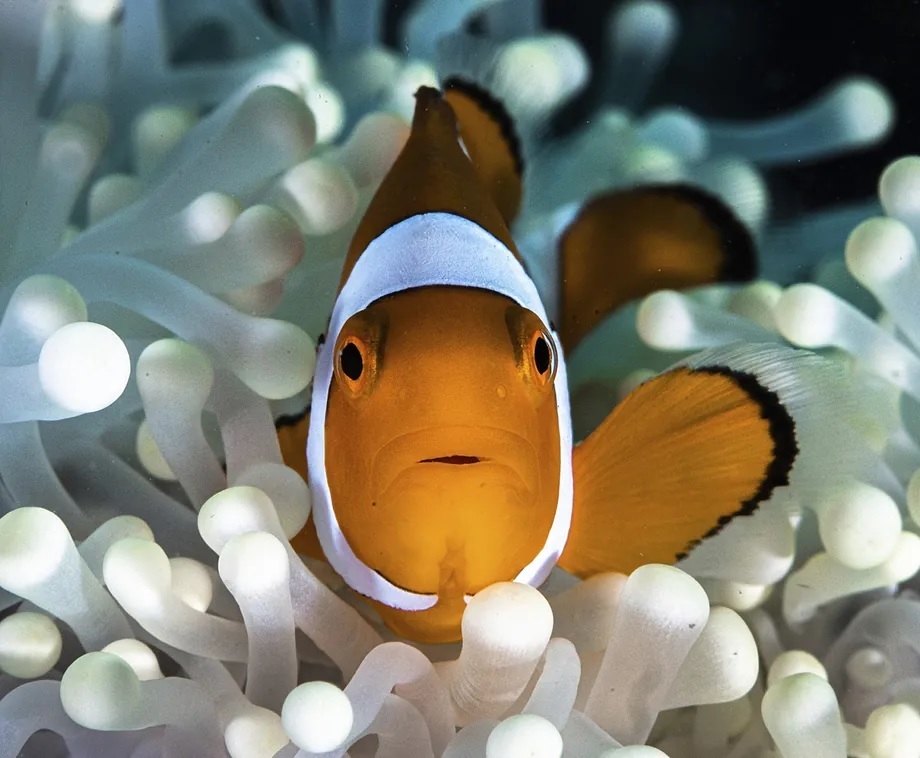The clownfish, world-famous from the animated movie Finding Nemo, has devised a clever strategy to survive stressful situations. According to new research, their bodies shrink in response to marine heatwaves and social conflicts.
The study, published in the journal Science Advances and conducted with clownfish from Papua New Guinea, was carried out by an international team of researchers from the UK's Newcastle and Leeds universities, and the US's Boston University.
Scientists tracked 134 specimens monthly over five months, measuring their length and monitoring the water temperature of the area where they lived every 4-6 days during a marine heatwave. Their findings revealed that shrinking in size was a common behavior among the clownfish, with 100 out of the 134 studied fish reducing their size. Not only were they thinner under stress conditions, but they also became shorter over time.
As explained to this newspaper by Melissa Versteeg, a doctoral researcher at Newcastle University and leader of the study, their hypothesis is that "this ability to shrink in size is linked to a combination of environmental stress and social factors."
The social conflict they refer to "includes aggression or even eviction from the anemone habitat, which is fatal" for this species: "Clownfish live in social groups where each individual's size is related to their social rank. The largest is the dominant breeding female, with the highest reproductive success and 'owner' of the anemone territory. Growing too large can disrupt this hierarchy, as higher social positions may be contested if anemone fish approach in size."
To minimize these social conflict threats, they maintain strict size proportions relative to their immediate superior. Thus, the size of a lower-ranking individual is limited to approximately 80% of the size of the fish that is their social superior. Among other conclusions, scientists found that males (lower rank) in breeding pairs shrink more dramatically compared to females to avoid approaching the dominant fish in size, aligning with social conflict theory.
Increased Survival Chances
This shrinking strategy of the clownfish, the study concludes, increased individuals' chances of surviving the marine heatwave by up to 78%.
As detailed by this researcher, their team calculated the percentage of body size change in each of the monitored clownfish, not the absolute measurements (millimeters), because social hierarchy limits how much a fish will grow based on its rank in the group. "What we have discovered demonstrates that these fish have an extraordinary capacity for plasticity in their growth over short periods of time, including contraction, but also growth when they recover," she explains.
Versteeg admits they do not know the exact mechanisms involved in this shrinking capacity: "This will require further tracking work, as our observations come from field research. However, the publication details how shrinking is related to the social rank of the anemone fish and how it responds to temperature changes," she points out.
On the other hand, the scientist notes a trend they are observing in the oceans: "The average size of many marine fish species worldwide is decreasing. This could be partly due to fishing removing larger fish from populations and also to climate changes reducing the growth rate or maximum size of individuals. If our finding that individuals shrink in response to stress is more widespread, it could offer an alternative mechanism through which ocean fish are getting smaller," she suggests.
